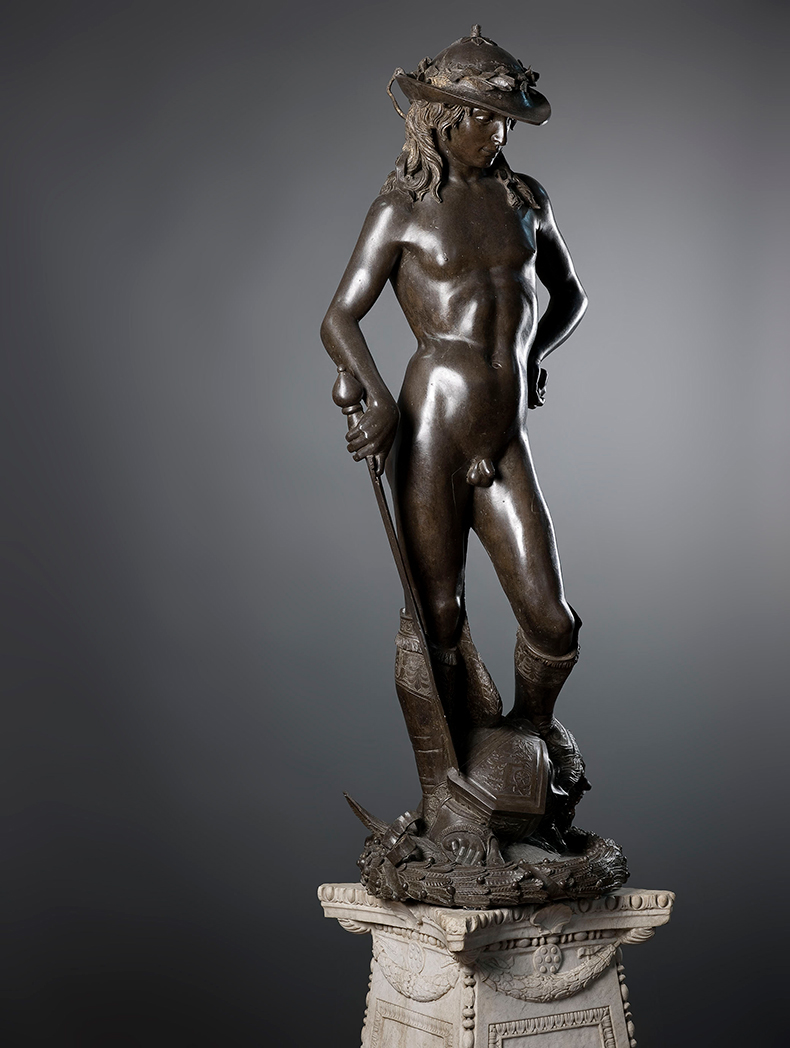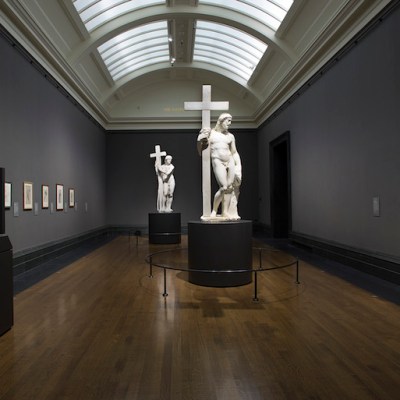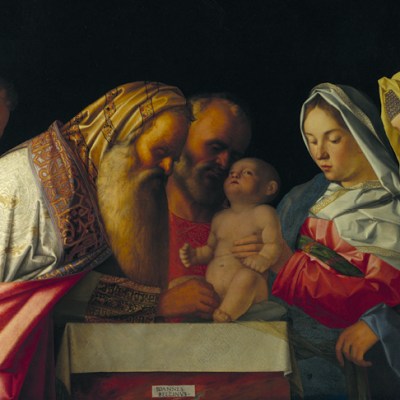From the May 2022 issue of Apollo. Preview and subscribe here.
It is impossible to recapture the effect that Donatello’s Feast of Herod panel from the baptistery font at Siena had on its first viewers, but ‘Donatello, the Renaissance’ – a survey of 130 works, divided between the Palazzo Strozzi and the Museo Nazionale del Bargello in Florence – comes close. The Feast is one of several extraordinary loans secured by the organisers, and the relief has been restored for the occasion. It now gleams as bright as any of the panels from Ghiberti’s Gates of Paradise. The perspectival plunge into depth, at the cutting edge of Florentine visual language, must have been startling for his Sienese audience. It was immediately imitated by Jacopo della Quercia in the Annunciation to Zacharias, but the Sienese sculptor failed to capture the wit of Donatello’s composition.
Feast of Herod (1423–27), Donatello. Battistero di San Giovanni, Siena. Courtesy Opera della Metropolitana di Siena

In the Feast, the viewer’s eye is pulled past the foreground events by the insistent perspective of the architectural stage. At the back of the scene, the eye encounters a youth half turning to meet our gaze. Flanking him, two faces in profile redirect us towards the platter on which the Baptist’s freshly severed head is borne into view. Then, having been pulled through space by the perspective, we are slowly carried back out as we follow the narrative, step by step, into the foreground again until we encounter the head a second time beneath Herod’s horrified gaze. With characteristic acuity, Donatello grasps not just the representational power of the technique but also how to harness it to his purposes as a teller of stories.
The Feast is just one episode in an endlessly inventive career during which Donatello transformed iconographies, pioneered new techniques, and tried his hand at nearly every available material. The path he took was neither orderly nor businesslike, but marked by sudden departures, stalled projects, and an unpredictability that frustrated even close collaborators like Brunelleschi. Any exhibition would have a hard time capturing this variety and offering a clear thread through it for the visitor. By opting for a chronological core with thematic accents, rather than attempting a radical reinterpretation of his work, this show achieves an elegant balance. The catalogue, likewise, complements excellent full-colour reproductions of Donatello’s work with an extensive biographical essay covering the sculptor’s career; it is full of the industry and insight of the curator Francesco Caglioti and his colleagues.
Occasionally, a bolder step outside of the biographical framework might have served to underscore Donatello’s indispensability to the period we call the Renaissance. Given the tradition connecting them, the opening juxtaposition of Donatello’s Santa Croce crucifix and Brunelleschi’s version from Santa Maria Novella is inevitable and testifies to the combination of friendly rivalry and fierce competition that drove Florentine culture to such heights. It might have been more revealing to line up these two early crucifixes against Donatello’s later bronze version from Padua, another one of the remarkable loans on display towards the end of the circuit at the Palazzo Strozzi. Equally, the bronze David would have been a striking substitution for the early marble David that greets the visitor alongside the crucifixes in this first room.
David (c. 1435–40), Donatello. Museo Nazionale del Bargello, Florence

The bronze David is so closely identified with the Bargello, however, that it remains there, in the Salone di Donatello, the name the room acquired after the first monographic exhibition of Donatello’s work in 1887. Redisplayed for the current exhibition, David now stands closer to the height at which it would originally have been seen; Donatello’s Marzocco is positioned in front and his Saint George to the rear. The lion and the knight both brandish their shields; rather than enhancing the vulnerability of the naked youth between them, this gives the display a military edge, underscoring the bronze’s unnerving combination of violence and adolescent beauty. The eye still slides up the smooth limbs of David’s body, but now he meets the viewer’s upturned gaze with an air of menace.
Donatello’s unique talents are revealed above all in small details. He is a master of the subtle gesture, whether that is the fleeting animation of the face, the foot flexing against the ground or, especially, the eloquent disposition of the hand. Fingers caught in cloth, hooked over a ledge, resting gently on a shoulder, a thumb against an ear – Donatello finds seemingly endless ways of enlivening the stock patterns of tradition. This mastery ultimately becomes an education in looking; no matter where you cast your gaze, Donatello has prepared something to reward your attention.
Several of these subtleties can be seen in the Feast of Herod. As the eye returns to the narrative in the foreground, it is held momentarily by the beautiful swaying form of Salome. She has two fingers curled into the skirts at her back to hold the fabric free while she dances. Close against her, a soldier leans forward, clutching a handful of fabric against his crotch; the friendly arm of a companion is thrown across his shoulders. If we follow that arm back to its owner, we find a man hidden behind Salome, his cloak drawn up over his mouth in horror. The easy intimacy of the feast is already dissolving before the sight of the severed head; the passage from arresting beauty to the shock of violence accomplished in the briefest of moments.
The sculptor’s hometown contains many sculptures beyond those on display at the Palazzo Strozzi and the Bargello, which are no less remarkable. ‘Donatello, the Renaissance’ will be followed by exhibitions in Berlin and London, but Florence is the place to see his work.
‘Donatello, the Renaissance’ is at the Palazzo Strozzi and the Museo Nazionale del Bargello, Florence, until 31 July.
From the May 2022 issue of Apollo. Preview and subscribe here.



